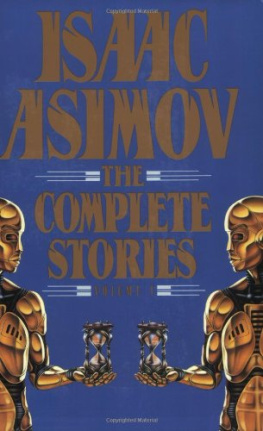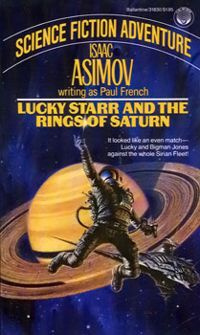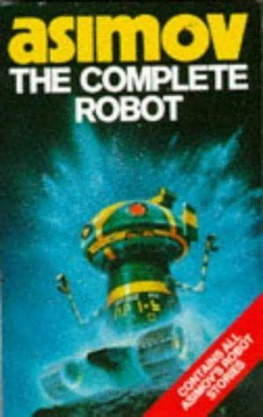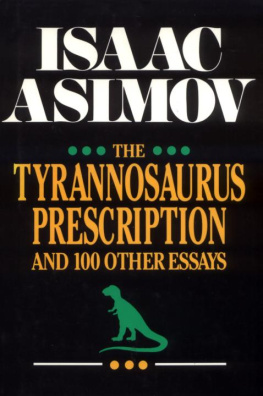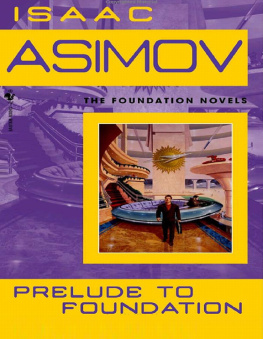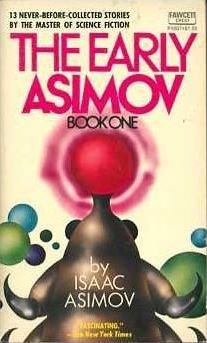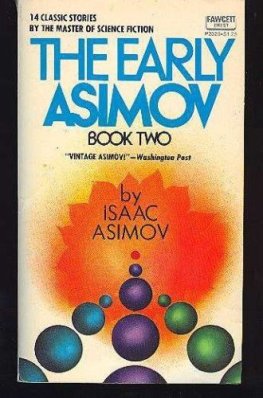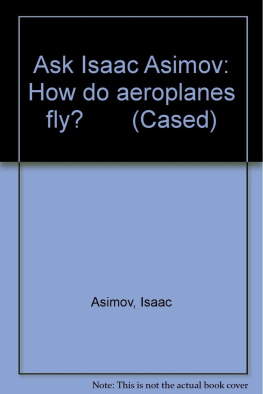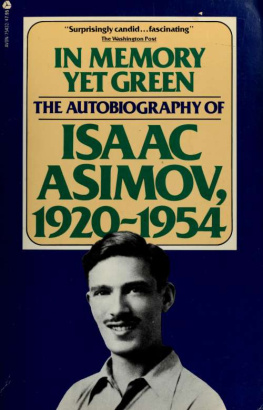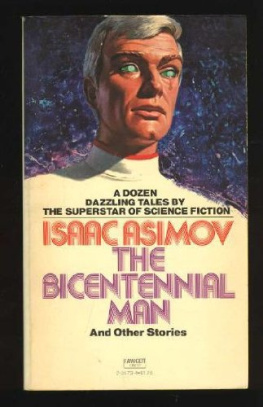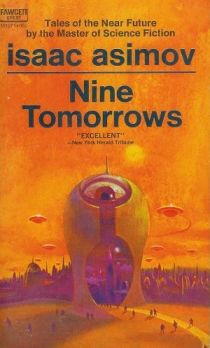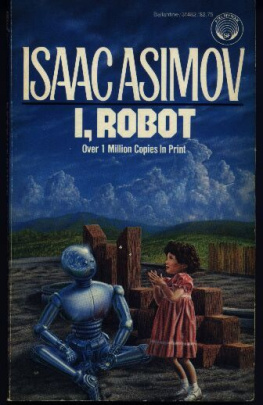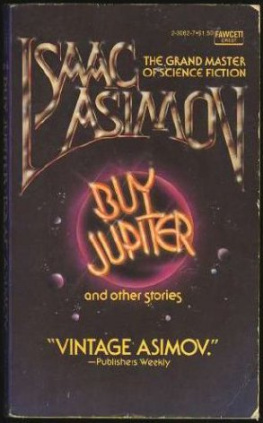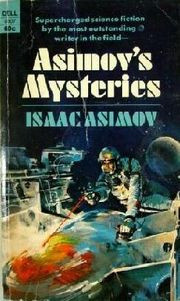In Joy Still Felt
The Autobiography of Isaac Asimov, 19541978
Isaac Asimov
AVON
PUBLISHERS OF BARD, CAMELOT AND DISCUS BOOKS
The lyrics from Fight Fiercely, Harvard, 1953 by Tom Lehrer, and The Subway Song by Tom Lehrer are reprinted by permission of the author.
AVON BOOKS
A division of
The Hearst Corporation
959 Eighth Avenue
New York, New York 10019
1980 by Isaac Asimov
Published by arrangement with Doubleday and Company, Inc. Library of Congress Catalog Card Number: 793685 ISBN: 0380530252
Cover photography by Alex Golfryd
Cover design by Robert Aulicino
Contents
Introduction
I suppose it is quite unlikely that you will be buying this book unless you have already bought and read the autobiographical book that preceded it, In Memory Yet Green (Doubleday, 1979). Presumably, having read it, you found yourself interested and are curious to see what happens next, so that you now have this volume, In Joy Still Felt.
There is, however, no law of nature to this effect. You may not have read the first volume; you may not be able to get it on short notice; and you may wish, nevertheless, to read this second volume.
To take account of this possibility, I would like to supply a short synopsis of the first volume so that you dont have to start absolutely cold. (If you have indeed read the first volume, you can, of course, skip this introduction.)
I was born in Russia on January 2, 1920, the oldest child of two middle-class Jews. My father was Judah Asimov; my mother Anna Rachel Asimov, ne Berman.
Considering that Russia had just gone through a world war and a revolution, my parents did not suffer unduly, but horror tales reached the outside world. My mother had an older half brother, Joseph Berman, in the United States. He wrote to find out how we were doing and offered to sponsor our emigration to the United States.
My parents decided to take advantage of the offer and in February 1923 they arrived in New York with myself and my younger sister. They found a small apartment in Brooklyn and settled down to an attempt to make a living.
I flourished in the new environment, taught myself to read at the age of five, entered the first grade before I was six, and was quickly pushed ahead by teachers who discovered I was unusually bright.
My father, meanwhile, unable to do much at ordinary jobs for which he lacked both experience and English, bought a candy store in 1926, and from that moment on, my life revolved about that candy store. It was open seven days a week and eighteen hours a day, so my father and mother had to take turns running it, and I had to pitch in, too.
Nevertheless, life progressed. My father became an American citizen in September 1928, and I became one automatically in consequence. I even gained a new sibling when my brother Stanley was born on July 25, 1929. By that time we had sold the candy store and bought a second, better one, but the stock market crashed that fall and like everyone else we found ourselves hanging on precariously. We never went hungry, but life was an adventure of counting pennies.
My schooling continued apace. I entered junior high school in 1930, high school in 1932, and Seth Low Junior College (a division of Columbia University) in September 1935.
Meanwhile, something new had entered my life. In 1929, I had discovered science-fiction magazines and, despite my fathers general refusal to allow me to read magazines, I persuaded him to make those an exception. I became an ardent science-fiction fan and by 1931, I was beginning my first experimental scribblings.
In 1935, my writing efforts stepped up a notch when I persuaded my father to get me an old, secondhand typewriter. For some years, though, my writing continued to be a private matter between myself and that typewriter.
On January 1, 1938, I began to keep a diary and have kept it up ever since. A lucky thing, too, for 1938 turned out to be a particularly eventful year.
For one thing, I joined a science-fiction fan group called the Futurians. One of its other members was Frederik Pohl.
Then, too, I finally managed to finish a story and on June 21, 1938, I actually took it in personally to Astounding Science Fiction, the leading magazine in the field. It was then that I met its editor, John W. Campbell, Jr., who was to have a greater influence on me than anyone but my father.
He rejected the story, but from then on I wrote regularly, taking in each story I wrote and accepting the rejections gladly since they were always accompanied by the most helpful discussions and letters. Finally, on October 21, 1938, I sold one of Campbells rejections to Amazing Stories. It was published in the March 1939 issue of that magazine.
In 1939, I obtained my Bachelor of Science degree and entered Columbia University Graduate School, majoring in chemistry. Although I continued to do well at school, and continued to work in my fathers candy store (by now he was in his fourth), I also continued to write furiously.
In 1940, I wrote the first of my positronic robots stories. Campbell rejected it, but Fred Pohl, who was now editor of two science-fiction magazines, accepted it.
In 1941, I published Nightfall, which brought me at once into the magic circle of top-ranking science-fiction writers, and in 1942, I published the first of my Foundation stories.
By then, though, things in the outside world were changing rapidly. World War II had started in Europe soon after I entered graduate school, and the attack on Pearl Harbor brought the United States into the war on December 7, 1941.
I had just attained my M.A. when Pearl Harbor was bombed and was continuing toward my doctorate under the guidance of Professor Charles R. Dawson. It could not last long, though. The war emergency had its demands and in May 1942 I suspended my studies in order to take a position as a chemist with the U. S. Navy Yard at Philadelphia. Also working there were two other science-fiction writers and friends of mine, Robert A. Heinlein and L. Sprague de Camp.
It was the first time I had ever left home but the trauma was eased by the fact that I was deeply in love and was planning to get married. I had met Gertrude Blugerman on February 14, 1942, and we were married on July 26 of that year.
I spent the duration of the war at the Navy Yard, but immediately after V-J Day I was drafted. I entered the Army on November 1, 1945, but didnt stay long. Though for a few months I was as far afield as Hawaii, I was back in civilian life on July 26, 1946.
I went back to my research, obtained my Ph.D. in 1948, and accepted a post-doctorate assignment at Columbia under Robert C. Elderfield.
That only lasted a year. Then, through the influence of Professor William C. Boyd of Boston University School of Medicine (whose acquaintance I had made when he wrote me a fan letter while I was in the Army) I got a post as instructor in biochemistry at that institution. The head of the department was Professor Burnham S. Walker and I did research work on a grant administered by Professor Henry M. Lemon.
I had been writing science fiction all through the 1940s, even while I was in the Army. All my stories had sold except for one rather long one written in 1947 for Startling Stories. It had been rejected and I had retired it.
Fred Pohl persuaded me to submit it to Doubleday & Company, Inc., as the basis of a possible book. Walter I. Bradbury of that publishing firm agreed to use it after satisfactory revision. It was published on January 19, 1950, under the title of Pebble in the Sky, and it was my first book.
Later that year, my robot stories were collected under the title of I, Robot and plans were made for the collection of my Foundation stories in three books. I began writing additional novels.
Next page

